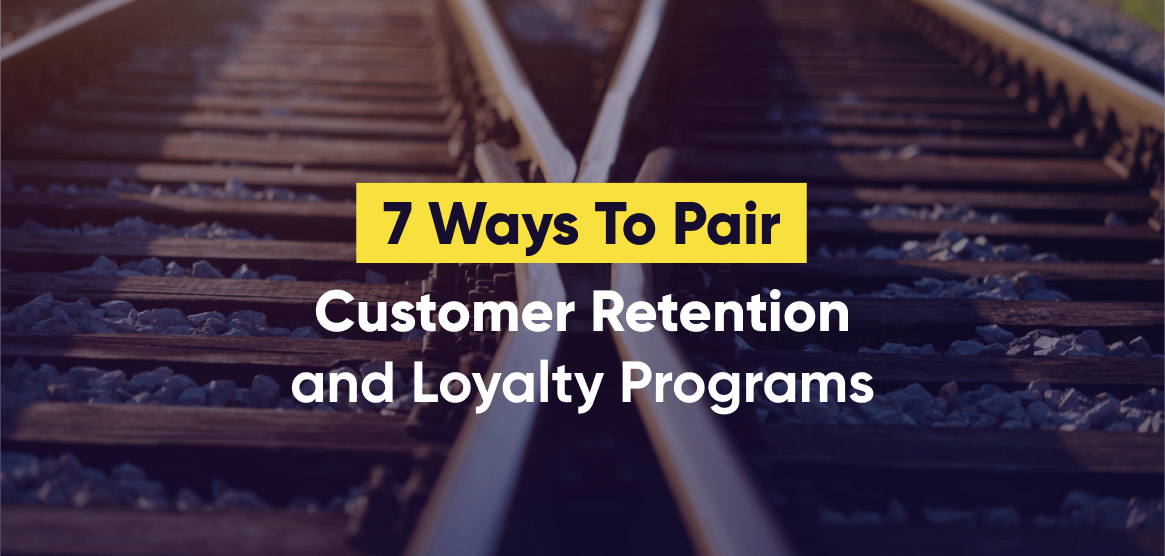Have you ever pondered whether customer retention and loyalty are the same thing? The answer is, sadly, no. Just because you give customers a reason to stay won’t mean that they’ll also stay with you once the incentive is gone. However, focusing your marketing efforts on strengthening customer retention and loyalty simultaneously can yield incredible results. But which tool or strategy is the most effective one for this purpose? Our bet is on loyalty programs because, with a rewards system, you can enhance customer lifetime value while also shaping their behavior.
Did you know that 80% of companies that measure the ROI of their loyalty program reported a positive ROI? That was one major finding in Antavo’s Global Customer Loyalty Report 2023. For more loyalty insights like this, make sure to download it!
Does Customer Retention Also Lead to Customer Loyalty?
Business leaders know that loyal and satisfied customers have a higher lifetime value and are more likely to keep buying from a company. Brands have a 60-70% chance of selling to existing customers, while they only have a 5-20% chance to sell to new ones.
However, is it true the other way around? Can you make customers fall in love with the brand by thrilling customers with offers and benefits? Not necessarily. According to research by Redpoint Global, 74% of customers believe that loyalty is about feeling understood and valued.
Building Customer Interest and Love With a Loyalty Program
The takeaway here is that if you want to retain customers and gain their loyalty, you need to have a secret weapon. You need more than just a discount.
Loyalty programs are a great solution as they can be built around a variety of reward types. Combining customer rewards strategically helps create a winning customer experience:
- Financial (vouchers, cashback)
- Experiential (tickets to a fashion runway)
- Community-based (member-only events)
- Personalized (hyper-tailored birthday rewards)
- Gamified (badges & challenges)
- Exclusivity-driven (early access)
In addition, rewards programs (especially tiered programs) are well-suited for prolonged engagement. Because just like Rome, loyalty isn’t built in one day. Generally, 80% of customers grow to love a brand over time — so you have to make sure your loyalty program can maintain their attention long enough to let the magic happen.
7 Ways to Use Loyalty Programs to Improve Customer Retention
With that in mind, here are several strategies that can positively impact a loyalty program member’s view of the customer experience, as well as push them towards repeat purchases.
1) Tiers – Build Customer Loyalty for the Long Term
Although the whole structure of a reward program is designed to keep members engaged, tiers take the cake in terms of longevity. Every purchase that an existing customer makes pushes them towards new levels and new benefits.
Many tiered programs have three levels, but if you’re aiming for long-term retention, you can always add more. Just be sure to come up with creative names for them, because it’s easier to stand out if you aren’t calling your tiers bronze, silver and gold. Tiers also encourage members to remain active and those who reach high tiers are also less likely to switch to your competitors.
2) Birthday & Anniversary Rewards – A Great Tool to Prevent Customer Churn
A quintessential surprise & delight tactic, birthday and anniversary rewards provide great motivation for members to stick to a customer loyalty program. The recipe is easy: offer customers a freebie or a personal discount during their birthday or anniversary month to make them feel special.
There are only two rules to keep in mind:
- Change the reward each year to keep members excited
- To keep this reward more exclusive, let people know that only those who reach a certain tier or annual spend are eligible
3) Experiential Rewards – Exceeding Customer Expectations
Unlike ordinary rewards, such as coupons or free product samples, experiential rewards hold true value. They range from a picture signed by an influencer, to a one-of-a-kind designer product, or even a luxurious weekend at a spa resort.
Receiving such a reward creates a lifetime memory for a loyalty program member. Experiential rewards have a high perceived value, but also come at a high cost, so they should be the most expensive items in your reward catalog. The goal here is to create incentives that require multiple high-volume purchases, or years of frequent, smaller purchases.
4) VIP Clubs – A Special Group for Your Loyal Customers
As insider groups within the loyalty program, VIP Clubs are ideal tools for engaging your most loyal customers. Unlike most brand communities, VIP Clubs require that members pay an entry fee either in points or cash. In exchange, members can get their hands on luxurious perks, such as early access to the hottest product drops.
As with experiential rewards, VIP Club memberships aim to generate a positive customer experience and prolonged engagement. But because the benefits are often transaction-related (such as early access, or free shipping), these memberships motivate members to keep spending in order to make the most of them.
5) Gamification – Shaping Customer Behavior
If you want to nurture customers in a fun and engaging way, be sure to implement some form of gamification. For example, you can add challenges or badges to your loyalty program. Based on behavioral science, these small feats of achievement offer small, incremental benefits to those who perform a given action regularly.
Another popular gamification feature in customer loyalty programs is prize wheels. Instead of focusing on recurring activity, prize wheels build excitement through the thrilling and random nature of the game.
6) Personalization – Better Communication Based on Customer Feedback
As mentioned earlier, showing appreciation towards members is the best way to improve customer loyalty. And what shows that you care more than personalized offers and product recommendations? When marketing and communications are personalized, members feel closer to the brand, but personalization requires a lot of information about personal preferences.
Luckily, rewards systems are an ideal tool for harnessing zero-party data by encouraging old and new customers to fill out surveys and questionnaires. And point economies and partner rewards make it far more cost-effective than using a flat-out discount.
7) Lifestyle Programs – Appreciating Your Customers’ Lifestyle
If you are really invested in bonding with loyal customers, the best thing you can do is engage with them outside of the buying cycle by rewarding non-transactional activity. The goal here is to thank and engage members with points and benefits even between purchases.
Offering bonuses through friend referrals or giving points for writing product reviews are the most common ways that businesses employ this strategy. However, these barely scratch the surface of possibilities. For instance, you can also give points for recycling used products or living a healthier lifestyle.
A New Day in Customer Retention Dawns Today
Neither customer retention nor customer loyalty is a given simply because you have a loyalty program. Instead, you should design the system to nurture your members and create a mutually beneficial relationship. If you succeed, you’ll have improved customer loyalty and retention rate.
Interested in next-gen loyalty programs that are capable of driving multiple KPIs? We are more than happy to discuss how Antavo’s technology can aid your business. Feel free to include us in your RFP or book a demo.
In the meantime, be sure to catch up on the latest customer loyalty trends by downloading our Global Customer Loyalty Report 2023.
FAQ About Customer Retention and Loyalty Programs
Why are customer loyalty and retention important?
Just because customers frequently buy from a brand doesn’t mean they are loyal. Focusing on customer loyalty and retaining their attention ensures that competitors won’t win them over with better deals.
Do loyalty programs increase customer retention?
A loyalty program can indeed have a positive effect on customer loyalty and retention as long as the concept is built around fostering relationships rather than exploiting people’s interest in the brand.
What factors increase customer retention and loyalty?
Expensive rewards and double-point campaigns won’t necessarily keep members around. Today, gamification, experiential rewards, and omnichannel engagement evoke better reactions from buyers.
Can you measure customer loyalty?
Although a number value cannot be assigned to each buyer, businesses can use various metrics to track loyalty, such as customer satisfaction scores, customer retention rates, and so on.

